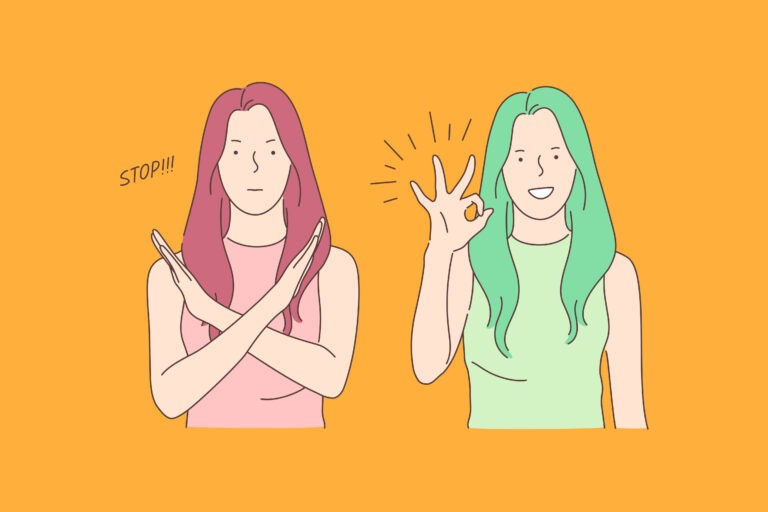
The word “consent” seems like a new term to me like “podcast” or “streaming.” Before 2010, I would not have known what someone was talking about if those words were used in conversation.
Now, the word, “consent” is encouraged, promoted, and prioritized in talking to teens about relationships and boundaries. The challenge for some adults is, “What do I tell the kids in my life about consent when I don’t even know what consent looks like?!”
If you were a child of the 80s and 90s it’s understandable if you feel that way!
Pop culture did a poor job of modeling consent in that era. For example, the movie, Revenge of the Nerds showed the main “nerd” character dressing up like the head “jock” to trick the jock’s girlfriend into having sex with him. And in American Pie, the plot is focused on the four main characters making a pact to lose their virginity before prom night. Those narratives with goal-focused, coercive undertones are cringeworthy and would not pass the audience test today.
Consent is one person asking to do an activity with someone and that someone responds.
It ensures everyone is having a good time! It’s communicating permission so that everyone feels safe, confident, and comfortable with the activity. It should be an ongoing conversation based on trust where boundaries are established and agreed upon. While we often think about consent as it relates to a sexual experience, it can be seen in everyday activities.
I like to use the analogy of going to an amusement park with a friend. There is so much fun to be had at an amusement park, but there are also experiences that some may want to avoid. Let’s use the five key principles of consent to navigate a potential roller coaster ride with a friend:
Using the 5 Key Principles of Consent as a guide can not only help you have more clarity on how to discuss the topic with kids in your life but also implement them into your own! Notice where you can use these principles to set boundaries for yourself and have conversations around consent and the media with people you love.

Authentic – Let’s say it is your friend’s first time at this amusement park and you are trying to decide what rides to go on together. You want to go on the roller coaster that goes upside down, but your friend has never been on one with a “loop to loop.” Your friend may seem nervous, but also excited to go on the ride since it is their first time. It’s important to make sure your friend is a clear “yes” without you pushing or pulling them to the line to get on the ride.
Active and Ongoing – Consent means actively agreeing and checking in. Maybe you are standing in the line and your friend changes their mind about going on the roller coaster. A person can change their mind if they are no longer comfortable with what is happening.
A Choice Based on Equal Power – Consent is a conscious choice. Maybe your friend had been drinking and they were unable to provide consent to get on the roller coaster. They are not at an equal decision-making level as you. Silence is not a yes. (Also, I don’t recommend drunken roller coaster riding. That is a recipe for disaster!)
An Informed Process – Since it’s your friend’s first time on an upside-down rollercoaster, it would be helpful to share expectations with them. Let them know how the harness works to keep you safe and what to expect on the ride. Again, if they aren’t comfortable with the activity, they can decline the invitation and wait for you to go on the ride while you enjoy yourself!
Clear and Freely Given – It’s best if you let your friend decide whether they want to try the upside-down roller coaster without bribery or convincing. Intimidation and coercion don’t feel good and take away from what could be a fun and exciting experience.
Using the 5 Key Principles of Consent as a guide can not only help you have more clarity on how to discuss the topic with kids in your life but also implement them into your own! Notice where you can use these principles to set boundaries for yourself and have conversations around consent and the media with people you love.
© A Step Ahead Chattanooga 2024 and website designed by Brightside Creates.
We collect cookies to analyze our website traffic and performance; we never share any personal data. View our Privacy Policy.